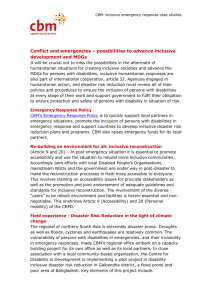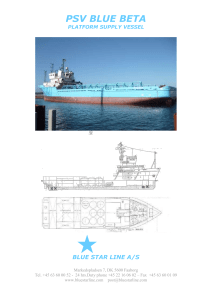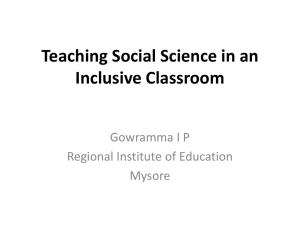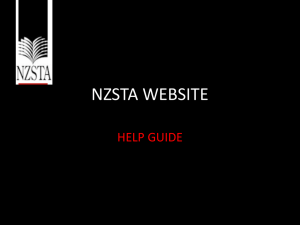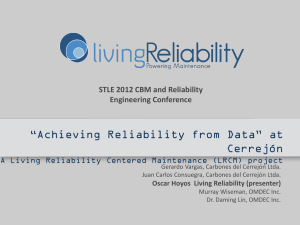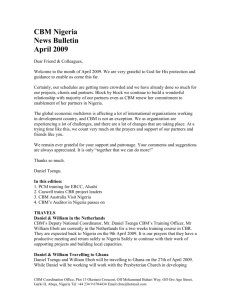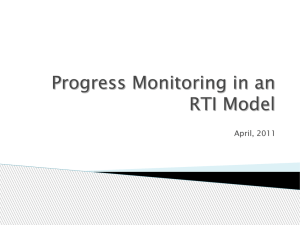DID Toolkit, Introduction
advertisement
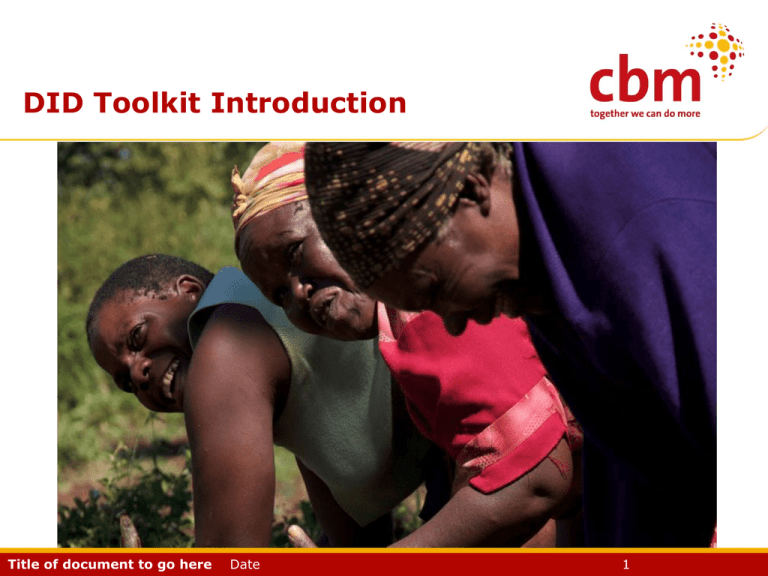
DID Toolkit Introduction Date: Place: Title of document to go here Date 1 Purpose of toolkit • A capacity development resource that can be used by the CBM family to build key foundational knowledge on disability inclusive development (DID) • And support consistency of DID messaging, understanding and application within CBMs work. Title of document to go here Date 2 Design A training resource that can be: • Dipped into for staff reflection sessions • Used progressively for staff training workshops • Used for short refresher training • Adapted for DID and advocacy work with external audiences • Be used as an easy read selfstudy guide Title of document to go here Date 3 Target Audience Key internal audiences: 1. Chapter 1: General, for all staff as an induction text 2. Chapter 2: Managers or those who have line management responsibilities 3. Chapter 3: Programme staff across CBMs advocacy, development and humanitarian programmes. 4. Chapter 4: Trainers and capacity development officers, or those who have responsibility for supporting learning, training and capacity development events and programmes Title of document to go here Date 4 Content Logic Each chapter provides: • Basic introduction to defined subject areas: key facts / references to theories/ conventions/ approaches etc. as relevant. • Includes facilitation exercises or tip boxes to show ways you might engage learning around the subject matter • Signposts relevant resources: training materials and documents both by CBM and other agencies for further reading / reference / use. • The DID content progresses in terms of complexity from chapter 1 through to chapter 3 Title of document to go here Date 5 How to use the DID toolkit Creatively Flexibly Collaboratively Adapting it to own it and suit your needs • In a spirit of learning • And finally… sharing your feedback and learning so we can improve it… • • • • Title of document to go here Date 6 Chapter 1: DID an introduction Purpose to ensure that all members of staff, regardless of their position, are able to confidently communicate and apply the basic principles of disability inclusive practice in their work. Chapter 1 is in five main parts: • 1.1 Provides basic explanation of what is disability: basic facts, figures and barriers • 1.2 An introduction to models of disability: from charity to human rights • 1.3 Offers some guidance on disability etiquette: language and communication • 1.4 Introduces Disability Inclusive Development • 1.5 Provides guidance on practicing inclusion in our day to day work Title of document to go here Date 7 Chapter 2: DID for managers Purpose: To orientate managers on Disability Inclusive Development and what this means in terms of management responsibilities and practice in line with CBMs current Global Programme Strategy (GPS2). Chapter 2 is in four main parts: • 2.1 Gives an introduction to CBM’s history and development approach • 2.2 Provides an introduction to DID • 2.3 Outlines key inclusive practice responsibilities for managers • 2.4 Outlines some theory and approaches to support change management processes Title of document to go here Date 8 Chapter 3: DID for programme stafff Purpose: To support CBM programme staff to take on board a more nuanced or broader understanding of disability and development issues. Chapter 3 is in four main parts: • 3.1 Gives an overview of evolving concepts and theory of disability • 3.2 Provides an introduction to human rights • 3.3 Gives an overview of the history of development theory, with key milestones and development issues • 3.4 Signposts inclusive programme initiatives within CBM as part of our Global Programme Strategy (GPS2) & situate us in line with broader development approaches Title of document to go here Date 9 Chapter 4: Inclusive Training & Facilitation Purpose: To support CBM staff and partners to develop confidence and capacity in inclusive facilitation and training. Chapter 4 is in five main parts: • 4.1 Gives an introduction to critical education and principles of adult learning • 4.2 Provides an introduction to learning and facilitation styles, preferences and cultures • 4.3 Gives an introduction to some methods to use when designing workshops or learning events • 4.4 Helps to reflect on when training is not the appropriate means for capacity development and looks at alternatives • 4.5 Looks at beginnings, middles and ends, giving some prompts to think about to ensure participation throughout Title of document to go here Date 10 Additional resources • A Master power point for each chapter which can be used for presentations or as a training resource. Slides which are intended for facilitation are shaded differently. • A glossary of key terms which can be used as a reference or adapted as a training resource. • Links to signpost other reliable resources/ websites and portals where people can find further relevant information. Title of document to go here Date 11 Types of links Please note there are two types of links: • web links which are directly available to all by using Control+ Alt+ Right click • internal CBM intranet links (on sharepoint) which are available through Citrix. To access these please copy the link into your web browser once signed into Citrix. Where possible external open source links are used. However for CBM documents which are still under development or not intended for external audiences these are only available on CBMs internal intranet. Title of document to go here Date 12 Use and translation of toolkit • The DID toolkit is available on Sharepoint for use by all CBM staff • Please feel free to adapt and use to suit your context. • In 2015 we will be arranging translation and adaptation of the toolkit for French and Spanish speaking contexts. Title of document to go here Date 13 Feedback welcome Feedback on the DID toolkit: content, design, presentation, accessibility and any suggestions for improvement to chapters, including introduction and glossary, should be given toKathy Al Ju’beh, Senior Advisor for Inclusive Development, (I0) KLT Kathy.aljubeh@cbm.org. Title of document to go here Date 14 Requesting support or mentoring to use the DID toolkit. • Should your office or department require support to use the materials in this DID toolkit please get in touch with Kathy Al Ju’beh. She will be happy to facilitate and support mentoring sessions, or connect you with DID resource people from the CBM community of practice who can also provide technical support in your region/ area in a number of different local languages. Title of document to go here Date 15
